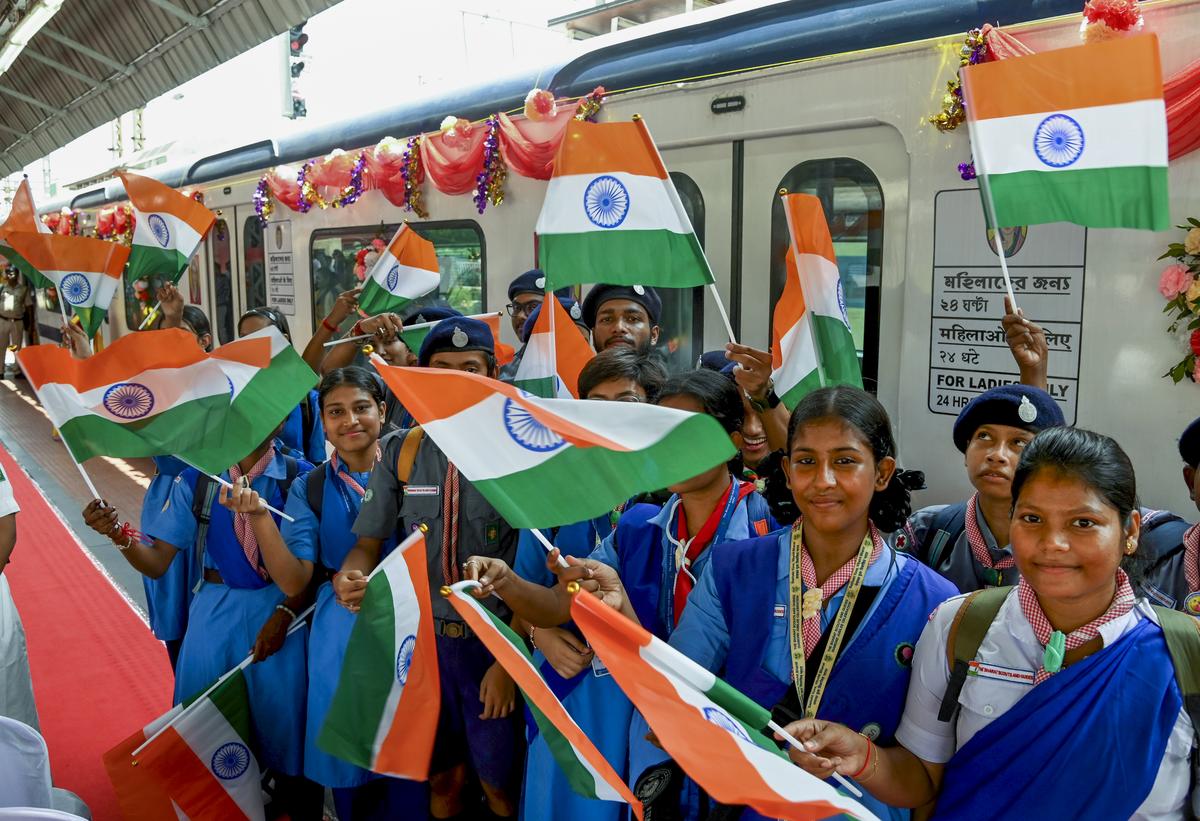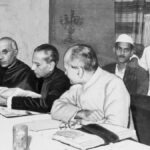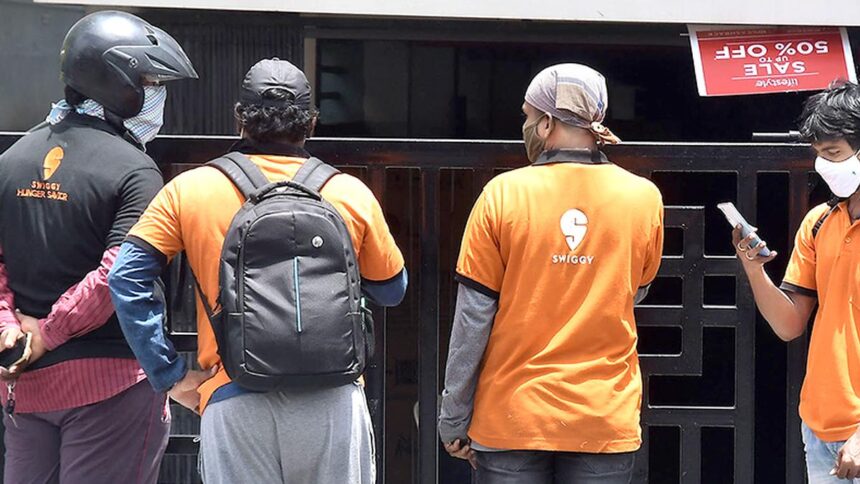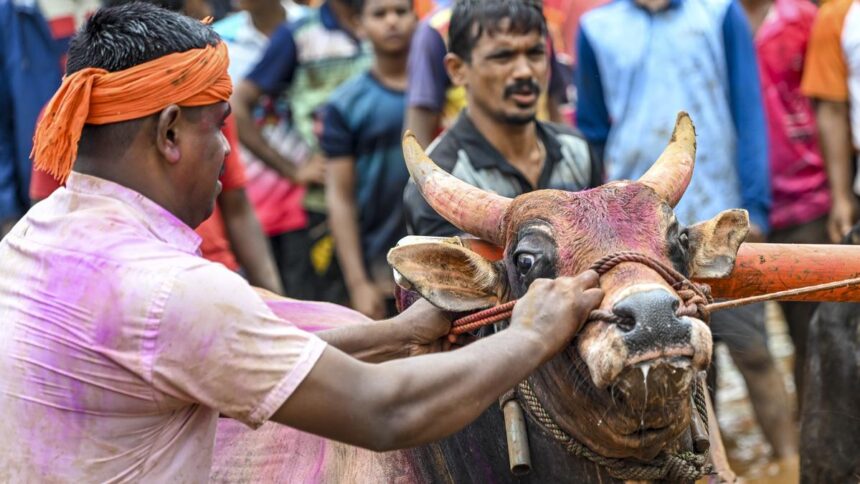For a nation of shopkeepers, intent on expanding its market reach, the final outcome of introducing the railways in India was something that the English East India Company (EIC) and its successor, the British Raj, did not bargain or foresee: the prising out of the jewel in the crown.
India lagged England and its other colonies in flagging off its railways. The steam horse was brought in after much deliberation and with financial guarantees to British capital, primarily for military and freight movement. But when it did arrive, the most unexpected response was the gusto with which Indians took to it as passengers. Freeing them from their domestic confines and giving them the liberty to travel, admittedly only in Third Class (or Fourth until 1885), the popular support that the railways enjoyed elevated it to a cash cow for the several private companies that ran multitude of lines.
New-found mobility gave Indians several freedoms — of movement, of exchange of ideas, of thought processes. It opened them up to recognise, accept, and respect mutual differences in a diverse country. Travelling gave them a sense of tangibility to places that were only words. Amidst futile protestations of the forced reality of inter-mingling and commensality between castes or religions, social or economic considerations, they also experienced commonness, and indeed that of oneness — all of which kick-started the journey towards nationhood — sentiments ready to be harnessed by leaders of the freedom movement.
Medium, mode, and methods
When the Sepoy Mutiny descended on the EIC, barely four years after it introduced passenger services from Bombay to Thane in 1853, the nascent railway network fulfilled a primary defence objective by deploying military trains to move troops and weapons, and siege-trains for counter-attacks. This rebellion was quelled. It was only a matter of time when nationalists, fired by visions of a free India, took to the railways — not just as a mode to traverse long distances but also to appropriate it as a medium to resist, challenge, and liberate fellow citizens from colonial oppression.
Between the 1857-Sepoy Mutiny and the 1920-Non-Cooperation Movement by Mahatma Gandhi, the rail network grew from 571.14 km to 59,119.25 km, connecting cities and hinterlands. The Crown, which sacked the EIC and took charge in 1858, continued expanding the railways (and education, and posts and telegraphs), making political mobilisation across distances possible. Not to be forgotten is the emergence of railways as an employer of vast numbers, thereby creating an organised labour force, admittedly at lower levels, resulting in frustrations, aspirations, and collective bargaining through trade unions, one of several entry points to public life for political leaders, and reservoirs for mass mobilisation. Although their demands were to do with working conditions these also gave, as G.D. Khosla characterises in his History of the Indian Railways, “expression to the national upsurge” against an exploitative system catering to a foreign power. The period was also marked by several strikes not restricted to the railways nor fully connected to but alongside the Non-cooperation movement launched by Indian National Congress (INC).
People from a nearby village gather at the railway station to catch a glimpse of Jawaharlal Nehru as his train halts at Balsara on the way to Bardoli.
| Photo Credit:
The Hindu Photo Archives
For Gandhiji, trains were the mode of travel through which he touched popular hearts and minds at a deep political and empathetic level through his journeys across the country in Third Class, thereby instilling an Indian identity. His explorations also exposed him first hand to specific conditions of hardship, such as those suffered by the indigo farmers in Champaran in Bihar, and the general poverty of India’s commoners eking out subsistence lives. It was also during one such visit to Madurai (Madras Presidency, now Tamil Nadu) that he reportedly discarded the shirt as an attire, moved by the plight of the peasantry toiling in fields in loincloth and struggling for existence.
The instrumentality of the railways as a medium of protest came in the form of both direct violent action and non-violent defiance. To the former category belonged the sabotaging of infrastructure — attempted derailments of trains carrying colonial rulers, tampering with tracks and permanent ways, and other acts of disruption. Defiance came in the form of ticketless travel, and meetings and other forms of protests at railway stations.
Trains were also targets of armed attacks by extremists. On August 9, 1925, revolutionaries from the Hindustan Republican Association robbed a train as it was approaching its destination, Lucknow. A report of the Intelligence Bureau, Terrorism in India, 1917-1936, gives this account of the Kakori Train Robbery on August 9, 1925, edited for brevity: “Having been successful in [earlier] crimes, the party aimed at bigger game…professional dacoits were enlisted, and a large party near Kakori ambushed a train, which three other members halted at the appointed place by pulling the chain. The guard was overpowered, the passengers were warned not to leave the train, and one passenger who alighted was promptly shot dead. A safe containing the earnings of various stations up the line was removed, and was later found broken open and rifled, the total loss being over Rs. 4,000.” Media reports that marked the centenary of this daring act placed the stolen booty at Rs. 8,000. An Avadh/Lucknow delicacy, the Kakori kebab, writes Chitrita Banerji in Eating India: Exploring a nation’s cuisine, is supposed to commemorate this robbery.
Dr. Rajendra Prasad and Sardar Vallabhbhai Patel arriving by train to attend the Gandhi Seva Sangha meeting at Brindaban, a town in Bihar.
| Photo Credit:
The Hindu Photo Archives
Railway platforms became places of whistle-stop darshans for nationalist leaders, in particular Mahatma Gandhi, as he traversed the country, again, on Third Class, except when he was unwell. The Father of the Nation was given rousing receptions at train stations, which would be sites of meeting and interacting with the masses. These wayside halts also enabled him to get a pulse of the people on important issues, for instance, Mohammed Ali Jinnah’s demand for Pakistan. Stations also had a monetary dimension. While they served as venues for handing over purses comprising collections made at public meetings, they were also theatres where a financial battle of wits was played out: Ticketless travel, with the slogan, Mahatma Gandhi ki jai would rent the air as protesters filled in the coaches and set off on their travels.
Financing the railways was yet another issue. As Christian Wolmar, author of Railways & the Raj: How the age of steam transformed India, points out, the matter of who paid for the railways “aroused much anger among Indian nationalists, who saw them as unnecessary and serving to entrench British rule”. For its part, the INC’s position on the railways was that of recognising its contribution but opposing how it was run, and, importantly, for whom. In its early petitioning phase, it saw the railways as an asset bestowed upon the country. However, as the nature of the party evolved to becoming a flag-bearer of freedom, it was critical of its exclusivist operations and expropriatory outcomes and called for greater inclusivity.
When it launched the Quit India movement as “the final struggle” (History of the Indian National Congress, Volume II), the railways, along with other state machinery, such as posts and telegraphs, and the police, were the target of protestors. These transcended non-violent means such as strikes and stoppages. “There was wide-spread destruction of the property of the Railways and Posts and Telegraphs. One hundred and four railway stations were attacked and damaged, 15 being burnt down; 16 derailments were caused; about 100 instances of sabotage to railway tracks were reported,” read the administration report of the United Provinces (later Uttar Pradesh) for 1942.
Giving leaders national reach
Unsurprisingly, it was at a railway station, or thereabouts, that Gandhiji and his protégé-to-become, Jawaharlal Nehru, met at “a spacious pavilion, erected opposite to the Lucknow Junction Station”, the venue for the the 31st session of the INC. An inscription erected at Lucknow Charbagh Railway Station mentions Gandhiji’s participation between December 26 and 30, 1916, adding, “He met Jawaharlal Nehru for the first time here.” The two revisited the venue in 1936, for the 49th session presided over by Nehru.
The railways were influential in taking the messages of not only Gandhi and Nehru but also of those from geographical extremes to audiences far beyond their local spheres of influence, giving them national reach. To name just three: Khan Abdul Gaffar Khan in the Northwest Frontier Province, who was honoured with the Bharat Ratna in 1987, Gopinath Bordoloi (who would become Assam’s first Chief Minister, Bharat Ratna, 1999), C. Rajagopalachari (Madras Presidency, later the last Governor-General of India, and the first recipient of the Bharat Ratna in 1954).

Students wave the Indian tricolour during the flag-off ceremony of the first air-conditioned EMU train of Eastern Railway at the Sealdah station in Kolkata on August 10.
| Photo Credit:
PTI
When the EIC planned ‘modernising India’, albeit for its own gains, it set in forces that would flag off colonialism’s return journey: English education (1835), post & telegraphs (1852), and the railways (1853). In about a century, a potent mix was created; ready to be harvested by leaders of all hues yearning for India’s freedom. The tumultuous years and the resultant transfer of power “at the stroke of the midnight hour” on August 15, 1947, were the historic consequences and the final outcome for which Lords Dalhousie and Bentinck and their successors did not sign up.
















